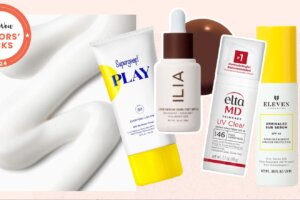Read Full Article Here“What’s up with your toenail? It’s thickened. Yellow. Brittle, or a little misshapen. Smells bad and really looks quite gnarly. It might be toenail fungus.
Toenail fungus is simply a contamination of the nail with fungus — and it’s tough to cure, Alex Kor, DPM, a podiatrist in Lebanon, Indiana, tells LIVESTRONG.com.
That’s because the infection lives under the nail in the nailbed, Cameron West, MD, board-certified dermatologist and dermatopathologist at U.S. Dermatology Partners in Wichita, Kansas, tells LIVESTRONG.com. That location makes treatment a challenge, as the nail itself can easily block medication from reaching the infection.
Typical treatment of nail fungus might include prescription topical antifungal cream applied to the nail, oral antifungal pills or nail removal in severe cases, according to the American Academy of Dermatology (AAD).
It can be a long haul: It takes toenails 12 to 18 months to grow out, so toenails may not look like they’re back to their original shape or color for quite some time. That’s a bummer, yes, but it’s always good to keep your expectations in check.
If you want to treat toenail fungus (also called onychomycosis) at home, here’s what you can do for a toenail fungal infection:
1. Listerine Antiseptic Mouthwash—Original Flavor
The gold-colored Listerine Original Antiseptic Mouthwash ($5.97, Walmart.com) is one of the best over-the-counter toenail fungus treatments. It contains thymol, a plant compound that has antifungal properties. (It’s not found in other varieties of Listerine, so the gold color is key.)
“This mouthwash can be used to treat nail fungus,” Dr. West says. “While it’s not particularly effective, some patients want to try something less aggressive, which is reasonable.”
To use it, Dr. West first recommends buying Listerine from a big box store (such as Costco), where you can buy large quantities and save money. (You can also get a pack of six 1.5-liter bottles from Amazon for $41.64). That’s because you’ll need to fill a basin with Listerine, such that you’re able to submerge your entire foot and nails in the liquid. He recommends doing this foot soak for fungus for 15 minutes two or three times per week. (Four times a week is even better, but that may not be doable for everyone.)
2. Vicks VapoRub
Vicks VapoRub ($5.79, Amazon) also has thymol, along with menthol, camphor and oil of eucalyptus, all of which may help get rid of nail fungus.
One small, January 2011 study on just 18 participants in the Journal of the American Board of Family Medicine found that regular and long-term use of Vicks VapoRub can be used to treat onychomycosis. Fifteen of the 18 participants benefitted from using Vicks, and the fungus was cured after 48 weeks in one-quarter of users.
“This is by no means a cure-all, but I have seen this work with my own eyes,” Dr. Kor says.
To use it, apply Vicks VapoRub with a cotton swab and try to work it under the nail a bit, Dr. West says. Put a sock on to keep the product in place. Repeat at least three to four times per week, though daily is safe, too.
3. Nail Trimming
Nail trimming isn’t a cure — but it’s an important piece of nail fungal treatment. Keeping nails long provides more of a place for fungal growth, according to the Mayo Clinic.
Before you trim your nails, soak them for about 10 minutes in warm water to soften them. To trim correctly, make small clips with nail nippers ($6.53, Walmart.com) and cut straight across — the Mayo Clinic’s visual guide can help you do this right.
Don’t forget to sanitize the tool when you’re done so as not to spread fungus to other nails. Other members of your household should use their own set of nail tools for the same reason.
4. Ozonized Sunflower Oil
With the consistency of petroleum jelly, this product has been shown to treat nail fungus better than an antifungal cream when used for three months, according to a September 2022 review in Clinical, Cosmetic and Investigational Dermatology. It’s available on Amazon: PurO3 Fully Ozonated Sunflower Oil ($19.95, Amazon).
To use it: Apply the product on the nail twice per day.
5. Tea Tree Oil
It’s not just for acne: The September 2022 review in Clinical, Cosmetic and Investigational Dermatology found using topical tea tree oil on toenail fungus for two to six months was just as effective as the antifungal clotrimazole, though a low percentage of people were cured in either group.
Take the limited research with a grain of salt, though: Tea tree oil is more of an antibacterial, says Dr. West, and he does not typically recommend it for fungal infections.
To use it: You should not apply undiluted tea tree oil to your skin. Either dilute it in a carrier oil or purchase a tea tree oil cream (such as USA Naturals Tea Tree Oil Foot Cream, $10.99 from Amazon) and apply that to your infected toes two or three times per day.
6. Garlic
If you can stand the pungent smell in your socks, then garlic may be for you. Keep in mind that the doctors we interviewed didn’t recommend garlic. However, some preliminary cell research in Molecules in October 2019 suggests the antifungal and antioxidant properties may be a potential treatment for onychomycosis. Studies are needed, however, to see how it stacks up against common prescription topical therapies, and you have to consider that this remedy will make your feet stink.
To use it: One 2012 review in The Pharma Innovation Journal recommends either placing chopped cloves in the toes of your socks at night or crushing fresh cloves and applying them on top of the infected toenail for 30 minutes.
Creating a cream at home can also be done by combining one tablespoon of fresh chopped garlic cloves, three tablespoons of coconut oil and one tablespoon of olive oil. Rub it on your toes daily. Store it in the fridge. (Probably should label it just in case other members of your household think it’s a culinary spread of some sort…)
7. Kerasal
Kerasal ($19.77, Amazon) is an over-the-counter nail lacquer that doesn’t target the fungus specifically but works to improve the appearance of nail damage caused by fungus. “Some patients have some success with this product,” Dr. Kor says. The product is made with urea, glycerin, lactic acid and a few other ingredients.
To use it: The brand recommends applying a thin layer in the morning and at night to infected nails, as well as getting under the nail as best as you can. Repeat that for one week. After, apply once at night for at least eight weeks. Three to six months total may be needed for treatment.
What About Vinegar or Hydrogen Peroxide?
There isn’t any research that shows vinegar treats onychomycosis. And although hydrogen peroxide is a mild antiseptic, there’s no research backing it for treating toenail fungus either. What’s more, the doctors we interviewed didn’t recommend either vinegar or hydrogen peroxide for toenail fungal infections.
What About Drinking Vinegar and Other Oral Natural Remedies?
Though consuming apple cider vinegar is given mythological properties as a cure-all, it won’t do anything for toenail fungus. “I think it’s nonsense,” Dr. Kor says.”
The 7 Best Natural Remedies for Toenail Fungus (and 2 to Avoid)
March 21, 2023







